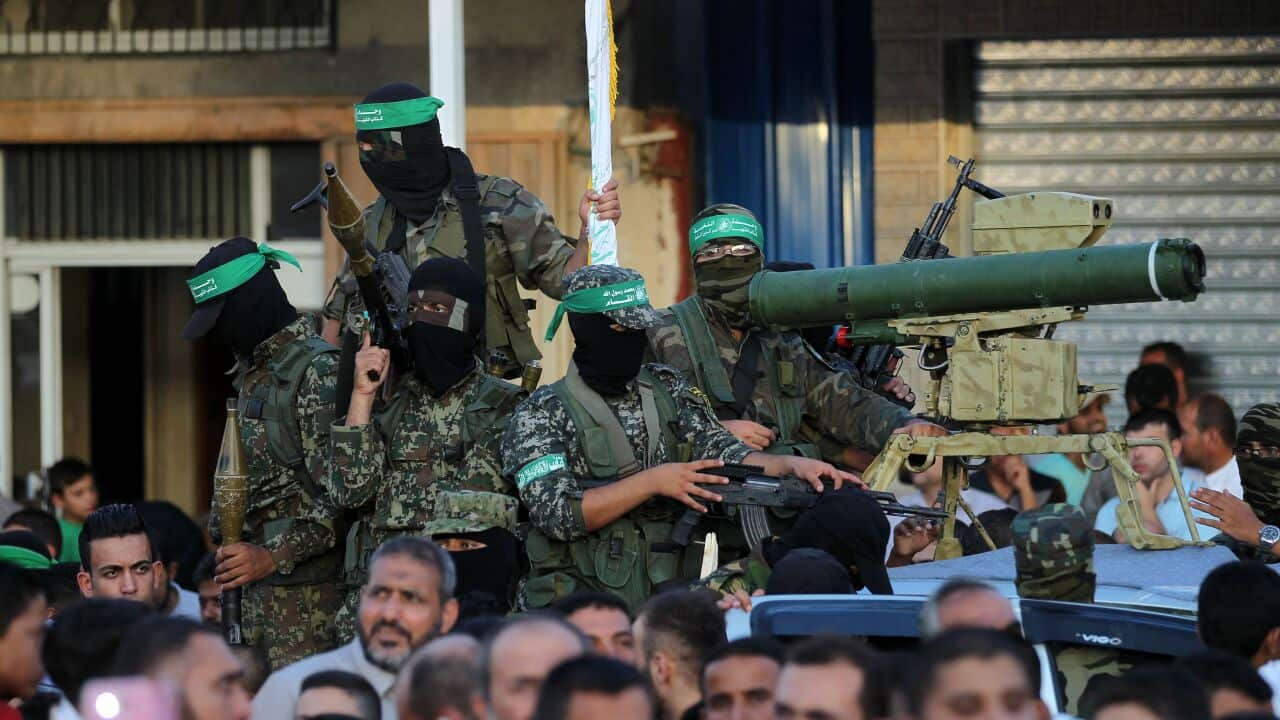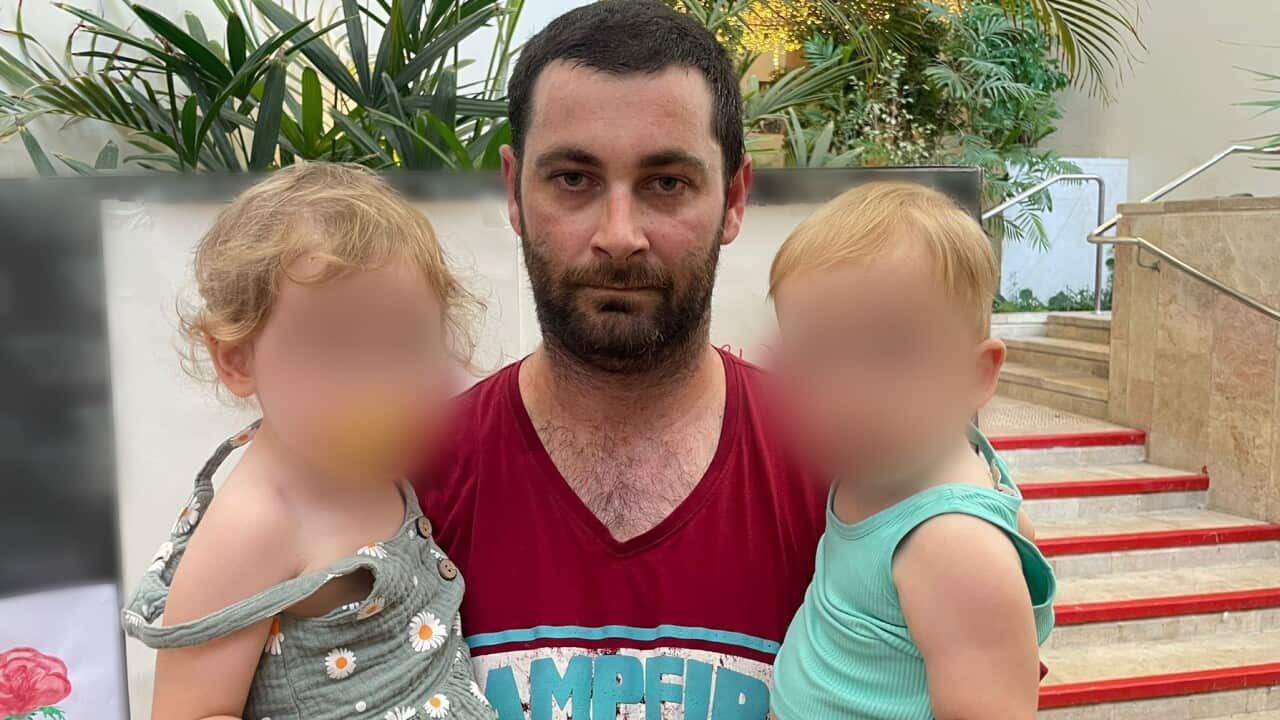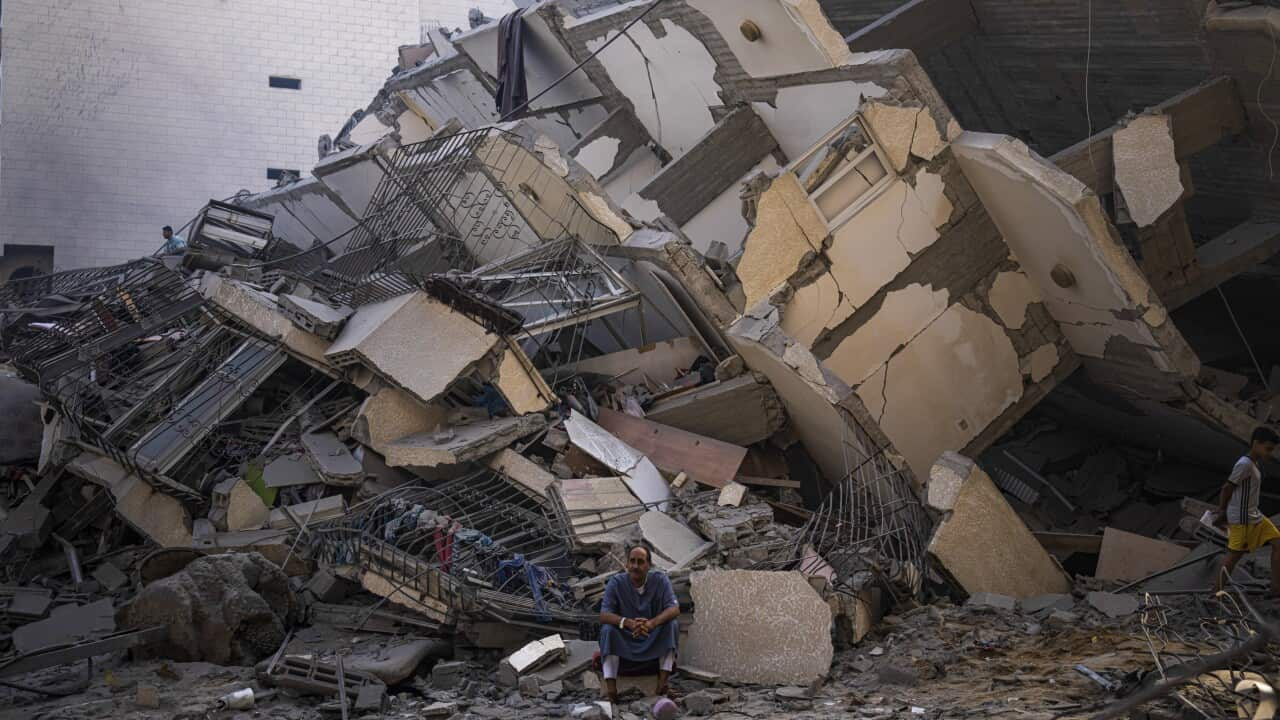Israeli forces on a mission to wipe out Hamas are confronting an ever-more capable opponent trained for years by a clandestine support network that stretches far beyond the tiny enclave of the Gaza Strip.
Hamas' deadly attack on southern Israel - unprecedented for the group in its planning and scale - was a devastating demonstration of the military expertise it has gained since seizing control of Gaza in 2007.
Here's how the once small Palestinian group secretly built up a "mini-army".
How did Hamas get so big?
The idea of Hamas - meaning zeal in Arabic - began to take form on 10 December 1987, when some members of the Muslim Brotherhood convened the day after an Israeli army truck crashed into a car carrying four Palestinian day workers, killing all of them. Stone-throwing protests, strikes and shutdowns in Gaza followed.
Meeting at the house of Sheikh Ahmed Yassin, a Muslim cleric, they decided to issue a leaflet on 14 December calling for resistance as the First Intifada, or uprising, against Israel erupted. It was the group's first public act.
Today, the secretive and sprawling organisation is unrecognisable from that small Palestinian group, according to Reuters interviews with 11 people familiar with the group's capabilities, including Hamas figures, regional security officials and military experts.
"They are a mini-army," a source close to Hamas in the Gaza Strip, who declined to be named due to the sensitivity of the matter, said. He said the group had a military academy training a range of specialisations including cyber security and boasts a naval commando unit among its 40,000-strong military wing.
By contrast, in the 1990s Hamas had less than 10,000 fighters, according to the globalsecurity.org website.
Since the early 2000s the group has built a tunnel network under Gaza to help fighters melt away, house weapons factories and bring in weapons from abroad, according to a regional security source, who also declined to be named. The group has acquired a range of bombs, mortars, rockets, anti-tank and anti-aircraft missiles, Hamas officials have said.

Hamas' expanding capabilities have produced increasingly lethal results over the years. Source: Getty / Said Khatib/AFP
Difficulties in importing weapons meant that over the past nine years "we developed our capabilities and are able to manufacture locally", Baraka, who is based in Lebanon, said.
In the 2008 Gaza war, Hamas rockets had a maximum range of 40km, but that had risen to 230km by the 2021 conflict, he added.
The expanding capabilities have produced increasingly lethal results over the years. Israel lost nine soldiers during its incursion in 2008. In 2014, the number jumped to 66.
H.A. Hellyer, a senior associate fellow at Britain's Royal United Services Institute, said Israel was capable of destroying Hamas in its expected attack on the densely populated enclave.
"The question isn't whether it's possible or not. The question is what sort of price will be exacted on the rest of the population, because Hamas does not live on an island in the ocean or in a cave in the desert," he said.
After the most recent Gaza war in 2021, Hamas and an affiliated group called Palestinian Islamic Jihad managed to retain 40 per cent of their missile inventories, a key target of the Israelis, according to the US-based non-profit Jewish Institute for National Security of America, keeping roughly 11,750 missiles compared with 23,000 before the conflict.
Which countries support Hamas?
Hamas' stated aim is to establish a Palestinian state, while refusing to recognise Israel's right to exist.
Hamas, in its entirety, is designated as a terrorist organisation by countries including Australia, Canada, the UK, and the US. Some countries list only its military wing as a terrorist group.
For Iran, Hamas has helped it realise a years-long ambition to encircle Israel with legions of paramilitaries, including other Palestinian factions and Lebanon's Hezbollah, according to Western officials.
The group's leaders are spread across the Middle East in countries including Lebanon and Qatar, but its power base remains Gaza.

Iran helps to finance and train Hamas. Source: Getty / Marco Longari/AFP
The sources Reuters spoke to said that while Iran trained, armed and funded the group, there was no indication that Tehran directed or authorised the attack.
"The decision, zero-hour, all of that was in Hamas' hands – but of course the general cooperation, training and preparation all came from Iran," the regional security source said.
Iran acknowledges it helps finance and train Hamas but has denied a role in the attack, although it praised it.
Hamas leader Ismail Haniyeh said in an interview with Al Jazeera television last year that his group had received US$70 million ($111 million) in military help from Iran. "We have rockets that are locally manufactured but the long-range rockets came from abroad, from Iran, Syria and others through Egypt," he added.
According to a US State Department report from 2020, Iran provides about US$100 million ($159 million) annually to Palestinian groups, including Hamas, Palestinian Islamic Jihad, and the Popular Front for the Liberation of Palestine-General Command.
An Israeli security source said that Iran had significantly increased funding for Hamas' military wing in the past year from US$100 million ($159 million) to about US$350 million ($556 million) a year.
After Israel withdrew from Gaza in 2005, Hamas began importing rockets, explosives and other equipment from Iran, Western intelligence sources have said. They were shipped via Sudan, trucked across Egypt and smuggled into Gaza through a labyrinth of narrow tunnels beneath the Sinai Peninsula, they added.

Hamas imports rockets, explosives, and other equipment from Iran. Source: Getty / Marco Longari/AFP
Some of these allies form part of a "Shi'ite axis" that extends from Shi'ite paramilitaries in Iraq, to Hezbollah in Lebanon to Syria's ruling minority Alawite, an offshoot of Shi'ite Islam.
The jewel in the crown of Iran's militia network is Hezbollah — conceived at the Iranian embassy in Damascus in 1982 after Israel invaded Lebanon during the 1975-90 civil war.
Hezbollah bombed US targets and ran a hostage-taking and hijack agenda, drove Israel out of Lebanon in 2000 and then gradually seized hold of the levers of the Lebanese state.
Iran seized the opportunity to co-opt Hamas in 1992 when Israel deported about 400 Hamas leaders to Lebanon, a source close to Hamas said.
Iran and Hezbollah hosted Hamas members, shared military technology and trained them in building homemade bombs for suicide attacks, the person added.











